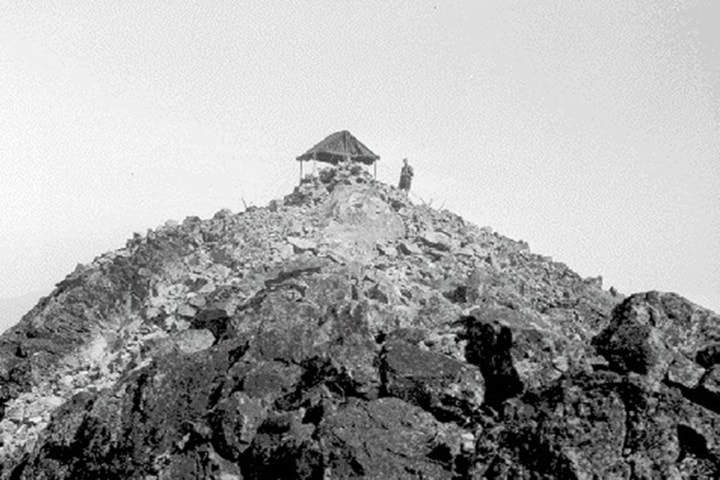By Greg Nesteroff, Black Press
A Facebook site devoted to images of this region from the 1950s to the ‘80s is proving wildly popular, with hundreds of photos and comments posted within weeks of its launch.
Over 300 pictures have so far been uploaded to Lost Kootenays, which describes itself as a “journey in space and in time into the heart of the Kootenays.”
More than half have been shared by locals. A browse reveals shots from the 1972 Silver City Days parade in Trail; the Balfour ferry terminal, late 1950s; and the Kimberley Snow Fiesta 1958. The page’s flagship image is of the 200 block of Baker Street in Nelson in the 1960s lit up at night.
There are lots of pictures from earlier years too, including snapshots that have never been shared with a wider audience. Others are from vintage postcards.
Users are encouraged to contribute images, home movies, or advertising, particularly of scenery or buildings but also events like parades or carnivals.
The site has so far received more than 4,750 likes from Facebook users. As one commenter said: “Lost Kootenays is the fastest growing site I’ve ever seen on Facebook! And who is the person that created this great site?”
Take a bow Zac Odin, a Creston writer and photographer, who spoke to the Star via email.
How did you get the idea for Lost Kootenays?
I have been gathering various images I came across on the internet of things that interested me for quite a while now, specifically of times that seem to have been lost.
For example, I have gathered a large number of Soviet-era snapshots, candid photos of normal people doing normal things in what we were led to believe was the Evil Empire.
I grew up in the Yukon and about a year ago I found some old and very interesting images of Whitehorse while searching Google which I posted on an old blog and Facebook page.
Most of these were postcards from the 1950s and 1960s showing a rather incongruous time – technological utopianism in the middle of nowhere. Not long afterwards I started following Vintage Los Angeles for similar reason.
Recently I came across a lot of great images of the Kootenays. Naturally, I found these fascinating and thought others would as well and so I started a page following the model of Vintage LA.
How would you sum up the goal of the site?
The original goal was to show a time in the Kootenays that was somewhat neglected – the 1950s through the 1970s.
I was born in the early 1970s and the ‘50s and ‘60s are, to me, a sort of golden age. Post-WWII affluence and then Cold War optimism in the face of the contradiction of nuclear destruction. A strange time when everything appeared to be new and people believed in the promises of the Space Age. Which is what appealed to me about pages like Lost San Francisco and Vintage Los Angeles to a large degree.
However after the participation of many people, the page’s focus has definitely changed, becoming more of a historical archive. But an archive of the people, not the elite. Free to add to and free to visit any time you like.
Where do you find the images that aren’t otherwise credited?
To begin with, Lost Kootenays is for entertainment and education. Nobody makes any money off it. Many of the images I posted in the early days of the site were found on Google, much like those on the other ‘lost’ sites, and as such are hard to source. Some of these first images are old postcards.
We have a disclaimer on Lost Kootenays to the effect that we will take down anything that anyone has a problem with; because we cannot control what page followers are posting any copyright infringement is unintentional and will either be credited or deleted. For the photos uploaded by users, when we sort them into albums we always credit the original uploader. This is stated clearly on the front page. If anyone does not want their photos added to the albums they need to let us know.
When did the site launch and how did you initially advertise it?
I started this site on March 22, uploaded some photos, etc. but didn’t do any promotion until the following Monday. I liked various local pages and then I believe the I Love Creston page was one of the first to reshare an image of downtown Creston.
On top of that some people I knew here were spreading the word. After that it just exploded, peaking last week with a mention on Global Morning News Vancouver’s Trending Now segment.
Are you surprised at the site’s popularity?
Yes. I thought I might get some interest for the same reasons that there are other pages like this one but I did not expect that there would be so much.
Why do you think it touched such a nerve?
I think there are a number of reasons. The obvious one is nostalgia and people remembering shared times and places. However, there is also the appeal of a vanished time, and I think this is what draws many younger people to the page, some of whom are still in high school.
Many of these images are archetypal like, for example, the Peebles Motor Inn in Nelson. It is almost perfect technological utopianism — textured concrete, shiny surfaces, bright lights, etc. and now it is gone, and can never be replaced. One gets a feeling of deep longing for places like that. And sometimes it’s good to know that they simply just existed once.
They are representatives of a Golden Age, whether that age was actually golden or not. There is obviously a historical appeal to this page as well that goes beyond memories. People simply just want to know the way things were and this deepens their experience of the area in which they live.
